The best description I could possibly provide as an introduction to the actual ruins of Fort Bowie comes from a National Park Service information brochure.
Fort Bowie is the story of Tom Jeffords and one-armed Gen. O. O. Howard riding into Cochise’s stronghold to negotiate a lasting peace. It is the story of Lt. John Rucker trying to rescue a fellow officer from drowning in a flooded canyon and dying in the attempt. It is a determined Gen. George Crook struggling to cover a vast territory with a handful of men and an embittered Geronimo fighting against hopeless odds. Fort Bowie is the story of a band of Indians who tried to stop the soldiers of the U.S. Army—the vanguard of an alien civilization.
A camp and finally a fort
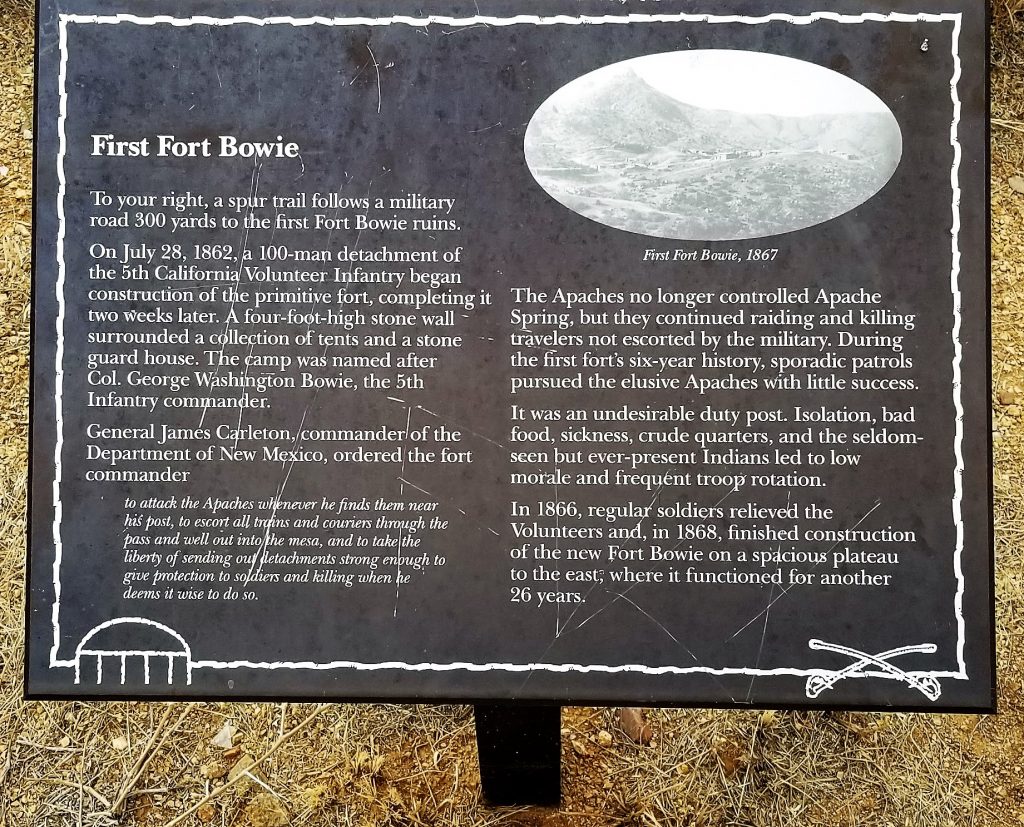
There were actually two Fort Bowie’s. The first one was constructed by the California Volunteers to address their continual engagement with Cochise and his band of Apaches. Truly, it was more of a temporary camp than an actual fort. In a mere two weeks, the men constructed a 4-foot stone wall around tents and a guardhouse.
As the signage indicates, it wasn’t a very desirable assignment. “Isolation, bad food, sickness, crude quarters, and the seldom seen but ever-present Indians led to low morale and frequent troop rotations.”
Nevertheless, it would be another six years before the army began construction of a real fort. It was built about 500 yards east of the first site, on a beautiful mountain plateau. Ultimately, this facility boasted barracks, officer’s quarters, a corral, a hospital, a school, a general store/trading post, and a tailor shop among other things.
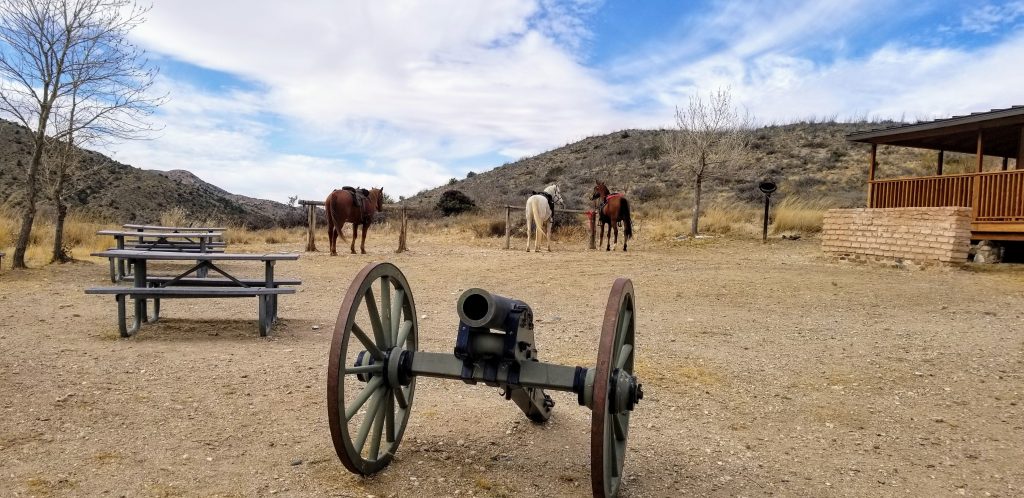
When you ride into the main part of the fort, there is a ranger station. There are hitching rails for your horses. After we secured our trusty steeds, Alan and I started walking around the fort.
Horse accommodations
One of the first ruins you will encounter after leaving the ranger station are the remnants of the horse corrals.
White stable frocks were available for the calvarymen to attend to their horses and tack without further soiling their already-dirty and threadbare uniforms! The saddler was an enlisted man, and he was responsible for maintaining anything leather that was used at the fort.
Do you know the difference between a blacksmith and a farrier? At the fort, two different men filled those positions. Preferably, the blacksmith was a civilian, as he did a better job. Furthermore, he didn’t have to divide his time between “smithing” and “soldiering”. His job was to work with iron. Therefore, he made the horseshoes.
The farrier shoed the horses. He was also the fort veterinarian, attending to bruised soles or wounds. It was also his job to rebuild horses who were overused during the brutal Indian campaigns. This man could be either a civilian or a soldier.
The buildings
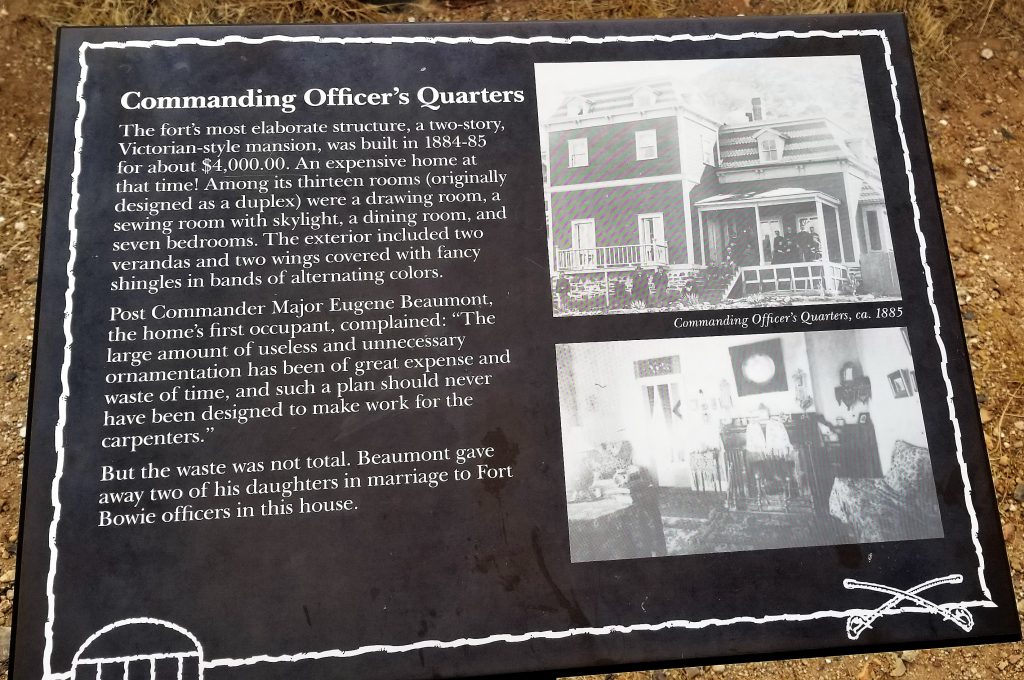
The Commanding Officer’s home cost $4,000 to build… in 1884! That number translates to a little more than $100,000 today. Initially, the CO complained about the expense. However, I am sure he appreciated his fancy digs when two of his daughters were married in the home.
The architects initially planned for the house to be a duplex. Nevertheless, the CO and his family enjoyed the home and its 13 rooms all to themselves. As the sign explains, there was a sewing room with a skylight. Every seamstress knows how hard it would be to sew using only lamps and candles! Additionally, there was a dining room, drawing room, and 7 bedrooms.
The infantry barracks were adjacent to the kitchen, and the mess hall was behind the barracks. Life in the barracks was a communal existence. Only sergeants had their own small rooms. Guns were locked on a central rack in the barracks, and only the Sargeant had the key. The men stashed their personal items either on a shelf at the head of their bed, or a footlocker. Fireplace heat was eventually replaced with cast iron stoves. The only light in the room was from candles or lamps at either end of the building.
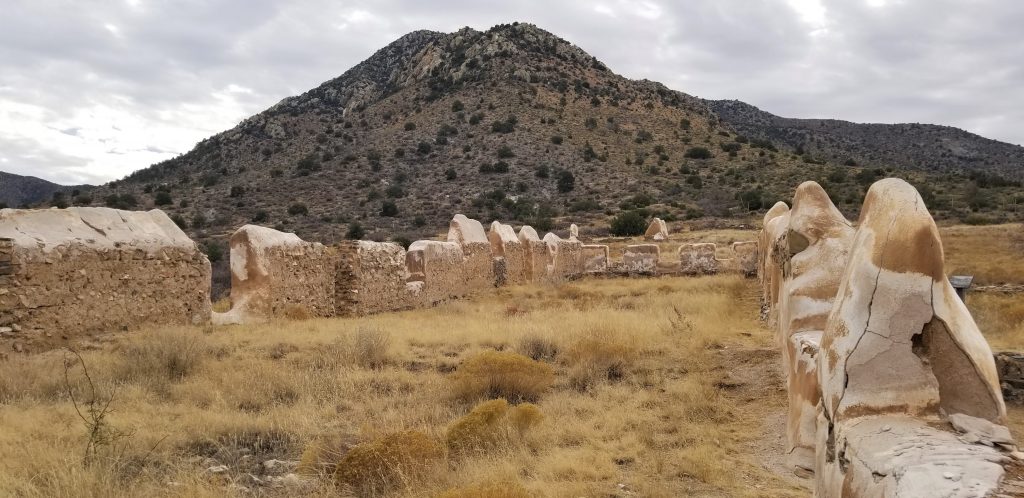
Not a 5-star restaurant…
The mess hall contained long wooden tables and benches. The tables were cleaned by scrubbing them with sand! I can attest to the fact that sand is plentiful in Arizona! Since it blows everywhere and is present everywhere, I guess it makes sense to clean off your table with sand… Each company ate together.
Quality food was an issue. “Cooks” were random enlisted men assigned to that duty. Whereas neighboring farms offered a source of fresh vegetables and meat, they were at least a day’s ride away in a wagon. The army utilized sundried, desiccated “vegetable cakes” and canned food to feed the men. One tasteless 7 pound “veggie cake” was able to morph into 42 gallons of probably-not-very-tasty soup.
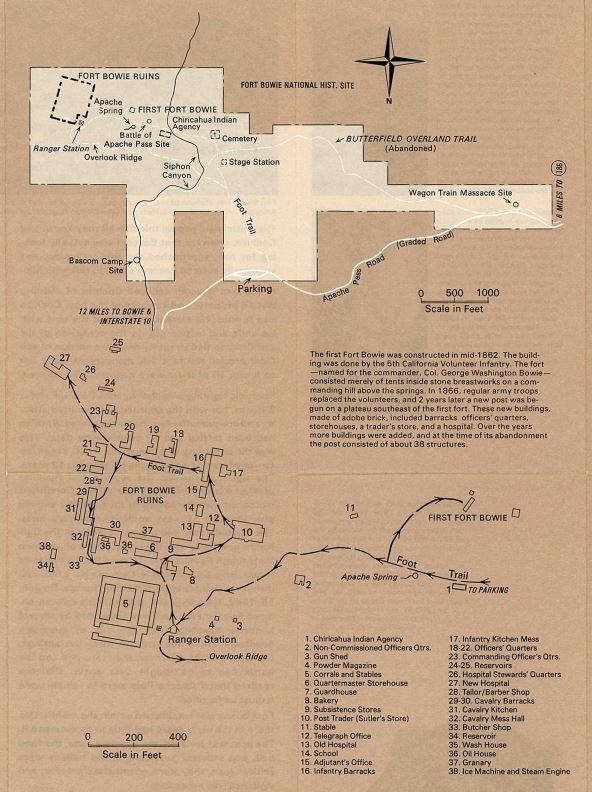
This is part of the brochure I mentioned at the beginning of the blog. It provides a great deal of information about the location of various buildings as well as the overall map of the Fort. Check back next week for more details on buildings in the fort, and eventually a blog about the incredible ride back. The scenery is breathtaking!











Used to ride through there 30 yrs ago. Came upon Geronimo’s infant sons grave. Glad they have it restored. Beautiful country.